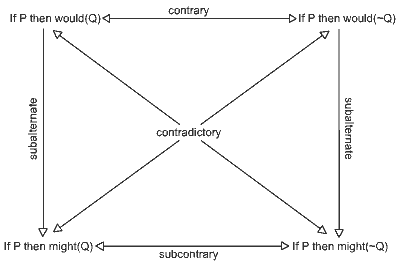Four Versions of Open Theism
Open theism has been much-discussed in philosophy of religion and theology circles since the 1995 publication of Pinnock, et al.'s The Openness of God. But in many ways I find that the view is still poorly understood. Critics frequently fail to appreciate that there are several importantly different versions of open theism.
First, we need a working definition of open theism. The core thesis of open theism is that the future is now, in some respects, epistemically open for God. Let's call this the epistemic thesis (ET). In general, the future is epistemically open for God at T with respect to possible future state of affairs X iff for some future time T* neither "X will obtain at T*" nor "X will not obtain at T*" is known by God at T. Whatever is not epistemically open for God at T is epistemically settled for God at T.
In terms of ET, I propose to define as a version of open theism any modification of classical theism to accommodate ET while retaining omnipotence and creation ex nihilo. (The qualifications are intended to exclude process theism.)
Second, to draw the proper distinctions, we need to define one more term. Let us say that the future is alethically open at time T iff with respect to possible future state of affairs X and future time T* neither "X will obtain at T*" nor "X will not obtain at T*" is true at T. Whatever is not alethically open at T is alethically settled at T.
Now, given these definitions, there are four importantly distinct versions of open theism (I'm borrowing here some terminology from my friend and collaborator, Tom Belt):
- Voluntary Nescience: The future is alethically settled but nevertheless epistemically open for God because he has voluntarily chosen not to know truths about future contingents. Dallas Willard espouses this position.
- Involuntary Nescience: The future is alethically settled but nevertheless epistemically open for God because truths about future contingents are in principle unknowable. William Hasker espouses this position.
- Non-Bivalentist Omniscience: The future is alethically open and therefore epistemically open for God because propositions about future contingents are neither true nor false. J. R. Lucas espouses this position.
- Bivalentist Omniscience: The future is alethically open and therefore epistemically open for God because propositions asserting of future contingents that they "will" obtain or that they "will not" obtain are both false. Instead, what is true is that they "might and might not" obtain. Greg Boyd (and yours truly) espouses this position.
- Positions (3) and (4) are wholly compatible with a traditional definition of omniscience (i.e., essentially knowing all and only truths). Positions (1) and (2) require some revision of omniscience as traditionally defined (viz., being capable of knowing all truths; knowing all truths that can be known).
- Since knowledge entails truth, if the future is alethically open, then the future must be epistemically open for God. Thus, if the future is alethically open, then it those who hold that the future is epistemically settled for God who must either revise the traditional doctrine of omniscience or run into the incoherence of saying that God knows things that ain't so.
Also posted at Prosblogion.

